#550 – Dick Bernard: Heritage. The Collet’s of St. Anthony MN. An Easter Story
There are legions of people who toil in the trade of family history. I’m one of them. We can all tell similar stories: as you begin to peel the onion, you find endless layers. Dead ends turn into “aha” moments. Aha moments can later return to dead-ends. The quest for a families history never ends.
Easter week I had an “aha” that may be one of those openings to a new chapter in my own family history. I hope someone takes the bait. I’ll just provide raw material.
My grandmother Bernard was Josephine Collette (until ca 1878 the family name was Collet, then Collett), born, it was always said, at St. Andrews ND in 1880. St. Andrews, at the confluence of the Red and Park Rivers, was built on the general site of an Alexander Henry Trading Post, known to most present-day people as a rest stop on Interstate 29 between Grand Forks ND and the Canadian border.
St. Andrews had a short and interesting life as settlers poured in beginning in 1878. It is said that Grandma’s Dad, Octave, ran a “hotel” at St. Andrews, probably during the period he was proving his claim a few miles west at Oakwood.
For years I knew the Collette family had first migrated in total to the legendary frontier town St. Anthony, preceding, then later absorbed into Minneapolis. They came west sometime in the 1860s. They had come from St. Lambert QC.
There are no family legends about intervening stops, or how they actually made the trip (depending on when they came, they might have gotten as far as the Mississippi R by train, thence upriver by steamboat.) But no story of what had to be a hard 1000 mile trek has surfaced.
Exactly when they came and left St. Anthony is still lost to history. The 1870 census of St. Anthony shows 14 in the Collette household and that the second to last child Joseph (May 21, 1864) was born in Minnesota, the older children in Canada. (St. Anthony in 1870 had a bit more than 5000 population, similar to Grafton ND today.)
By 1869 my great-grandparents Clotilde Blondeau and Octave Collette had married – at St. Anthony of Padua in St. Anthony – and had their first child, and were likely living with the rest of the family, though recorded as a second household. You can see a tintype of Clotilde and Octave, likely taken after their marriage in 1869 in St. Anthony MN, below (click to enlarge all photos).
The census shows that four adults were working in a “paper mill”; the two wives were “housekeepers”. (There is mention of the Paper Mill at page 328 in this most interesting link about the St. Anthony Falls District.)
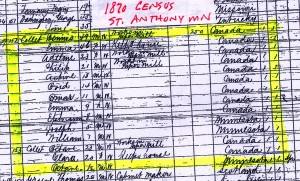
By 1875 most if not all Collette’s moved to Dayton MN (suburban Minneapolis), thence in 1878, the first of the family moved to Dakota Territory. They seem to have made group decisions on these matters.
But where did they live in St. Anthony?
Until this past week, I hadn’t delved into this question.
I found the likely answer a few miles from where I type this post, at the library of the Minnesota Historical Society. In the 1871-72 city directory of Minneapolis and St. Anthony was this: “Collet, D. farmer 2d St. cor [corner] Maple”. I asked to see a period map of St. Anthony (click to open, portion below): St Anthony ca 1870001.
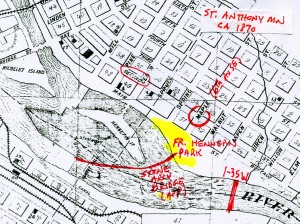
I’ve been to this area many times, in fact, twice this past week I was in the falls area for other purposes. I made a trip to see the exact spot. Alas, there is no longer a “Maple Street”. A quick review of contemporary maps fixed Maple as now being 6th Avenue SE, the access point to Fr. Hennepin Park and the famous Stone Arch Bridge one short block away, and three blocks upriver from the I-35W bridge – the one that collapsed into the river in 2006.
While the environment has totally changed from 1860s and 1879s to today, it felt like I was home for Easter.
Here are some photos I took in the area Friday April 6, 2012. Click to enlarge.
Happy Easter.
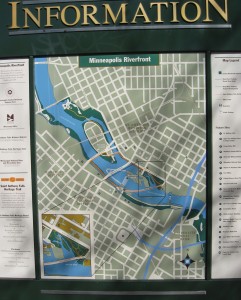
Tourist Map at Fr. Hennepin park. “Collet Corner” would be a block outside right hand side of the inset box on the map.
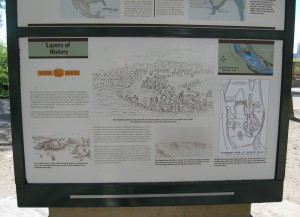
Tourist info at Stone Arch Bridge two blocks from 2nd and Maple (6th Ave SE) St. Anthony (Minneapolis).
Postscript: Of course, tentatively answering one of these questions raises infinite other questions. Without enumerating mine, perhaps you can raise your own…and help with the research!
Type the word “heritage” in the search box to find the previous five heritage articles. #1 is here.

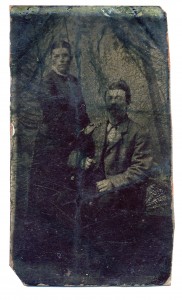
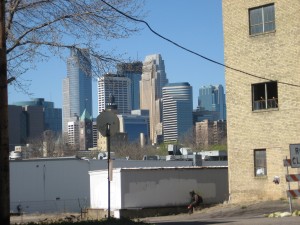
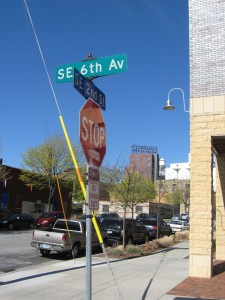
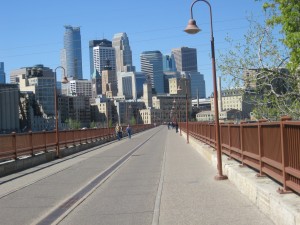
Leave a Reply
Want to join the discussion?Feel free to contribute!